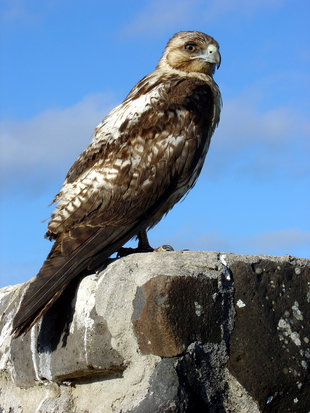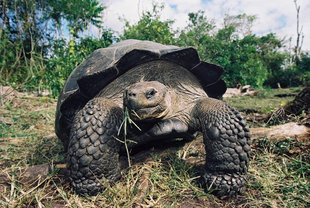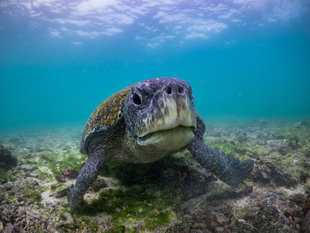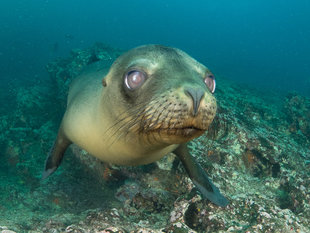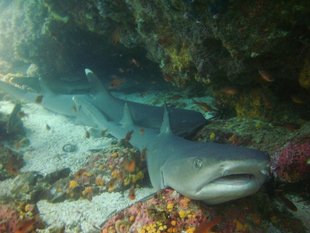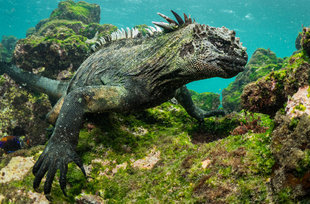Area Size: 18 Km²
Maximum Altitude: 458 metres / 1503 feet
Island Highlights: Sea Lion, Giant Tortoise, Galapagos Hawk, Maine Iguana, Galapagos Snake
Introduction
Pinzón is amongst the smallest of the islands in the Galapagos and is situated in the geographic centre of the archipelago. The island's official name derives from the Pinzón brothers who were the captains aboard two ships (Pinta and Niña) in Christopher Columbus's fleet during his expedition to the region. It's English name, Duncan, comes from an Admiral of the British.
Pinzon has a marine tortoise reserve and seal rookery, although the island is off limits to land based visitors. The island has no visitor sites and a permit is required in order to step foot on land. Permits are usually reserved for scientists and researchers.
Landing on Pinzón Island is somewhat difficult due to the 150 metre high cliffs that surround it. The formation of the island consists of a collapsed volcano and there is visible evidence of marine erosion to see.
Pinzon harbours its own endemic species of Galapagos tortoise (Geochelone ephippium). It has a saddled back carapace which enables long neck extension. Their main food includes grasses, cacti, lichen, moss and leaf litter.
Numbers dwindled to about 200 in the mid 1960's and it appeared that the population was not increasing because all hatchlings were being eaten by introduced rats.
Numbers have increased by about 50% thanks to the rearing programme which has been rearing giant tortoises on Santa Cruz and transferring them to Pinzon once they are larger: at a 'rat proof' age. See Conservation Issues for further details.
Whilst Pinzon is of limits for land based visitors, we can dive here, most often on day trips from Sta Cruz. This is a dive site suitable for beginners and intermediate divers. We usually dive on the east side where two tower-shaped rocks emerge. A wall covered in black coral drops to 10 meters and from there is a sandy slope that drops to more than 50 meters. Species commonly observed include the red lipped bat fish, sea horses, sting rays, turtles and white tip reef sharks.
The island is also home to a number of sea lions, the pups of which make for playful diving companions.
Conservation Issues
In a project which began in 1965, the Charles Darwin Research Station has helped to save Pinzon's endemic giant tortoise from the brink of extinction. Hatchlings were collected and taken to the station, where they were incubated. Once the hatchlings were big enough to resist attack from predators such as dogs and rats, they were repatriated back onto Pinzon.
Such conservation methods have been extremely successful in the archipelago and have consequently safeguarded a number of giant tortoise species on several islands. In conjunction with these conservation techniques, eradication campaigns have been implemented, which aim to remove the introduced species that threaten the tortoises. Although many giant tortoise species have been safeguarded this way, much work still remains to be done.
Pinzón

